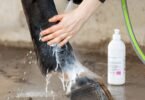Owning a horse is a dream for many equestrians, but bringing that dream to life requires careful planning, responsibility, and a suitable environment. Having a horse at home offers convenience, a deeper bond, and full control over their care, but it also comes with daily tasks, financial investment, and land requirements. This guide will walk you through everything you need to know to successfully keep a horse at home, from preparing your property to managing daily care and costs.
Is Keeping a Horse at Home Right for You?
Before moving forward, consider these essential factors:
✔️ Do you have enough space? Horses need adequate grazing areas, shelter, and room to move.
✔️ Can you handle daily care? Feeding, cleaning, and exercise require consistent commitment.
✔️ Are you financially prepared? Costs include feed, vet care, farrier services, and property maintenance.
✔️ Do you have access to equine professionals? A nearby veterinarian, farrier, and feed supplier are crucial.
If you can confidently answer yes, then keeping a horse at home could be a rewarding and fulfilling experience!
Essential Land and Space Requirements
Horses thrive in open spaces with safe, secure enclosures. Here’s what you need to provide:
1. Sufficient Pasture Space
🌿 Minimum space needed: At least 1 to 2 acres per horse for grazing.
🌞 Why it’s important: Adequate space prevents overgrazing, health issues, and stress.
🔹 Tip: Rotate grazing areas to maintain healthy pasture and soil.
2. Safe and Secure Fencing
🚧 Best fencing options: Wood, vinyl, electric tape, or mesh fencing.
🚫 Avoid: Barbed wire (can cause serious injuries).
🔹 Tip: Regularly inspect fences to ensure safety and prevent escapes.
3. Shelter and Stabling
🏠 Basic requirements:
- A run-in shelter (minimum 12×12 feet per horse) for protection from weather.
- A stable if you plan to keep horses indoors for part of the day.
🐎 Stall Size Recommendations:
- 12×12 feet for standard horses
- 10×10 feet for ponies
- 14×14 feet for larger breeds
Daily Horse Care Responsibilities
Owning a horse at home means daily care and maintenance. Here’s what to expect:
1. Feeding and Watering
🥕 Diet Needs: Horses require hay, fresh pasture, and grain (if needed).
💧 Water: Provide fresh, clean water at all times (minimum 10-15 gallons per day).
🔹 Tip: Use heated water buckets in winter to prevent freezing.
2. Stall and Pasture Maintenance
🧹 Daily tasks: Remove manure, check for hazards, and refill water.
🚜 Weekly tasks: Rotate pastures and inspect fencing.
🔹 Tip: Compost manure to reduce waste and improve soil health.
3. Exercise and Socialization
🏇 Daily turnout: Horses need several hours of movement daily.
🐴 Companionship: Horses are social animals—consider keeping at least two together.
🔹 Tip: If space is limited, plan for regular riding or lunging sessions.
Veterinary and Hoof Care
Regular health care is essential for your horse’s well-being:
🩺 Vet check-ups: Annual vaccinations, deworming, and dental care.
🐴 Farrier visits: Hooves should be trimmed every 6-8 weeks.
🔹 Tip: Keep an emergency first aid kit on hand for minor injuries.
Costs of Keeping a Horse at Home
Owning a horse comes with financial responsibilities. Here’s an estimate of common expenses:
💰 Initial setup costs: Fencing, shelter, equipment → $2,000 – $10,000+
💰 Monthly feed and bedding: Hay, grain, shavings → $150 – $500 per month
💰 Farrier & vet care: Trims, vaccinations, emergency visits → $500 – $1,500 per year
💰 Property maintenance: Fence repairs, pasture management → Varies
🔹 Tip: Budget extra for unexpected vet bills or equipment replacements.
Pros and Cons of Keeping a Horse at Home
✅ Advantages:
✔️ Stronger bond with your horse
✔️ Full control over their diet, health, and routine
✔️ No boarding fees
✔️ Convenient access for riding and training
❌ Challenges:
🚧 Daily responsibilities, no days off
💰 High initial setup and maintenance costs
🏡 Requires significant space and time commitment
🚑 Emergency preparedness is crucial
Final Thoughts
Having your own horse at home is a dream come true for many, but it requires careful planning, dedication, and resources. With the right preparation—adequate space, secure fencing, daily care routines, and financial planning—you can create a safe, healthy, and happy environment for your equine companion. If you’re ready for the responsibility, bringing your horse home can be one of the most rewarding experiences in your equestrian journey!







